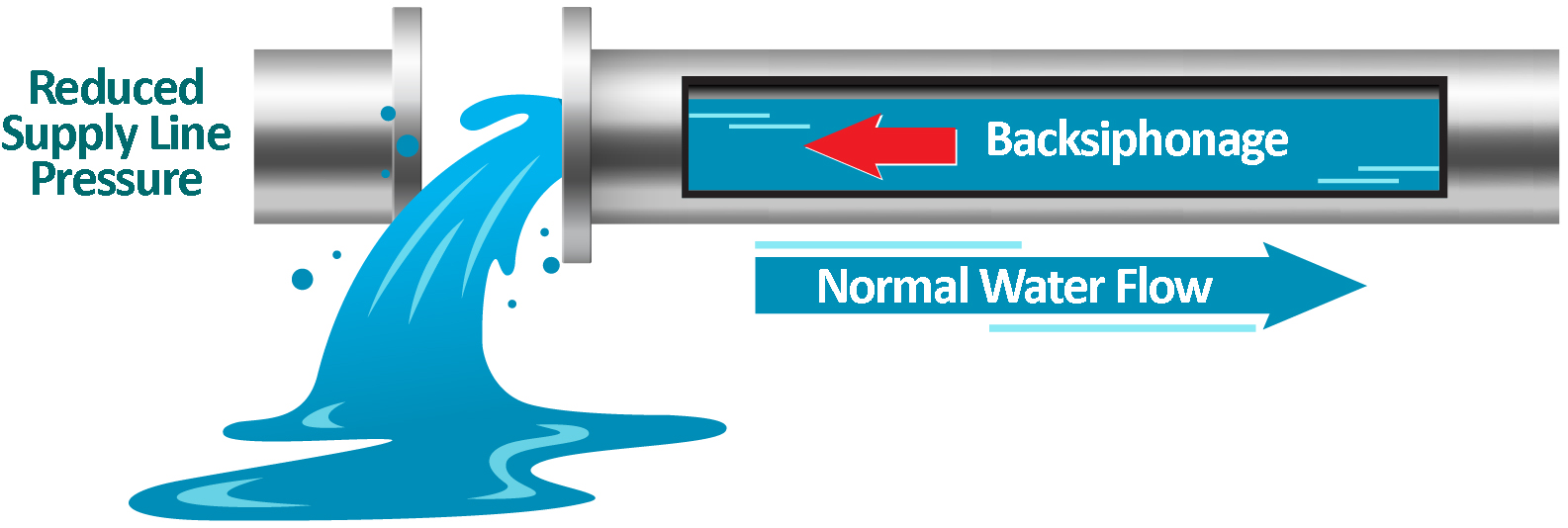Fully compliant with local, state, and federal regulations, the Otay Water District’s Cross-Connection Control Program plays a vital role in ensuring safe, reliable drinking water by protecting the public water system from potential contaminants.
In accordance with the State Water Resources Control Board’s Cross-Connection Control Policy Handbook, when backflow protection is required, customers must install an approved backflow prevention device — at the customer’s expense — before starting or continuing service.
Contact the Backflow Department:
backflowreports@otaywater.gov
(619) 670-2263
Jon Chambers, Meter Services Supervisor
(619) 670-2788
Cross-connection is any direct or potential link between a drinking water supply and a
non-potable source. Such connections can allow harmful substances, such as chemicals or dirty water, to flow back into the public water system.
Backflow is the unwanted flow of water, liquids, or gases back into the public water system. It can occur when a change in pressure causes contaminated water to flow in the opposite direction. There are two types of backflow: backpressure and backsiphonage.
Backpressure occurs when the pressure in a private water system exceeds that in the public system, causing water to flow backward and potentially introducing contaminants into the public system.
Common sites of concern include:
- Properties with wells or auxiliary water sources
- Sites with booster pumps
- Sites with elevated storage tanks
- Sites with boilers and cooling towers
Backsiphonage occurs when the pressure in the public water system drops, such as during a water main break or high-velocity demand on the system (e.g. fire hydrant use). This can create a vacuum, causing water to flow backward and pulling contaminants into the system.
Examples include:
- A hose left submerged in a pool or spa
- A hose left submerged in a container holding household chemicals
- An unprotected supply line feeding a submerged inlet on a tank or holding vessel
Installation and Testing
The District requires the installation and maintenance of a certified backflow prevention assembly (BPA) on all non-residential water service connections and any residential service determined to have a low or high level of hazard. The District determines the appropriate BPA type for the hazards that exist at each site.
Devices must be installed on the customer’s side of the service connection per District Standard Drawings and Specifications and remain accessible for maintenance and testing.
The District sends annual reminders when testing is due, with a list of certified testers. Testing is required at least annually from the installation date and after repair, replacement, or relocation. Customers must schedule and complete testing with a District-approved certified tester at the account holder’s or owner’s expense.
Failure to install, maintain, and test a BPA or comply with regulations may result in fines or water service disconnection until resolved.
Single-Family Residential Properties with Fire Protection Systems
Single-family residential properties with fire protection systems are required to install an above-grade double check valve backflow prevention assembly (at the customer’s expense) unless all the following criteria are met:
- The home has only one service connection to the public water system
- A single service line splits for domestic flow and fire protection system flow, allowing the fire system to be isolated from the rest of the home
- A single, industry-standard water meter measures combined domestic and fire flows
- The fire system is constructed of NSF/ANSI Standard 61 certified piping materials
- The fire system’s piping is looped within the structure and connected to one regularly used fixture (e.g., a toilet) to prevent stagnant water





